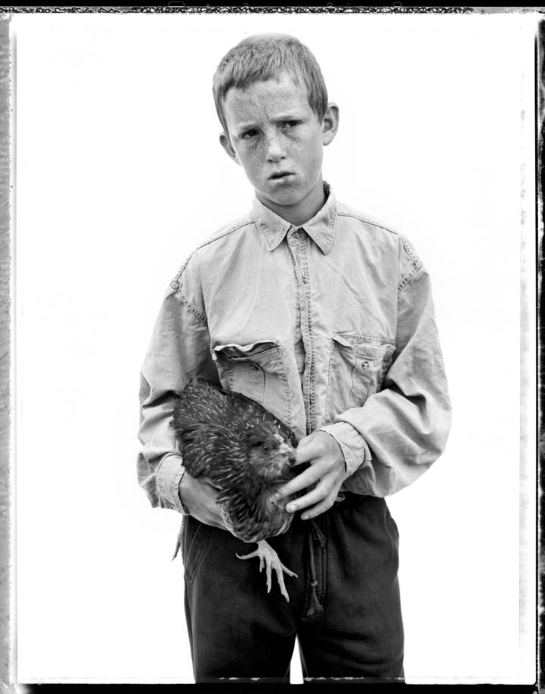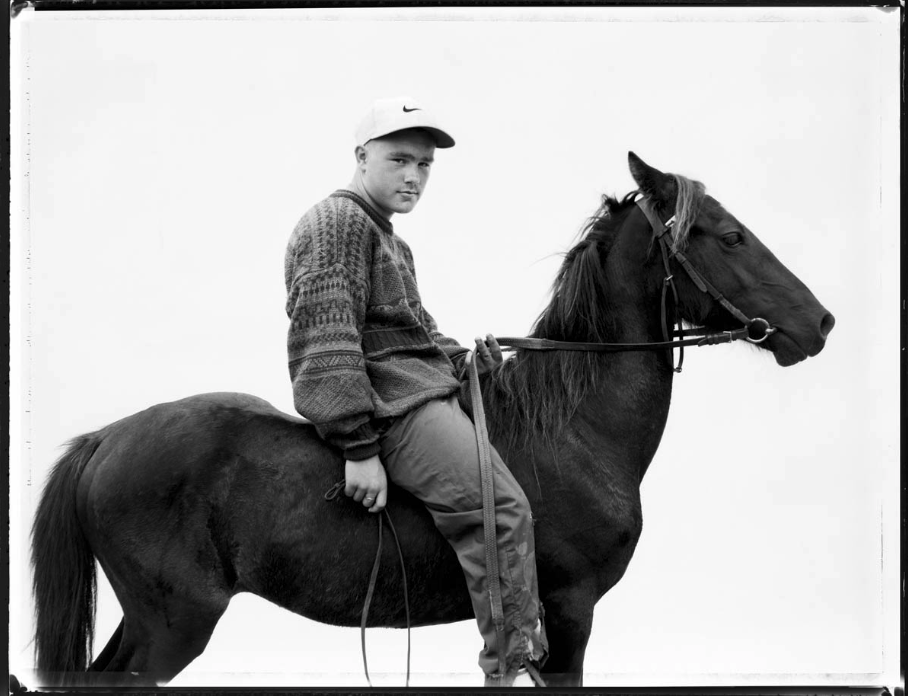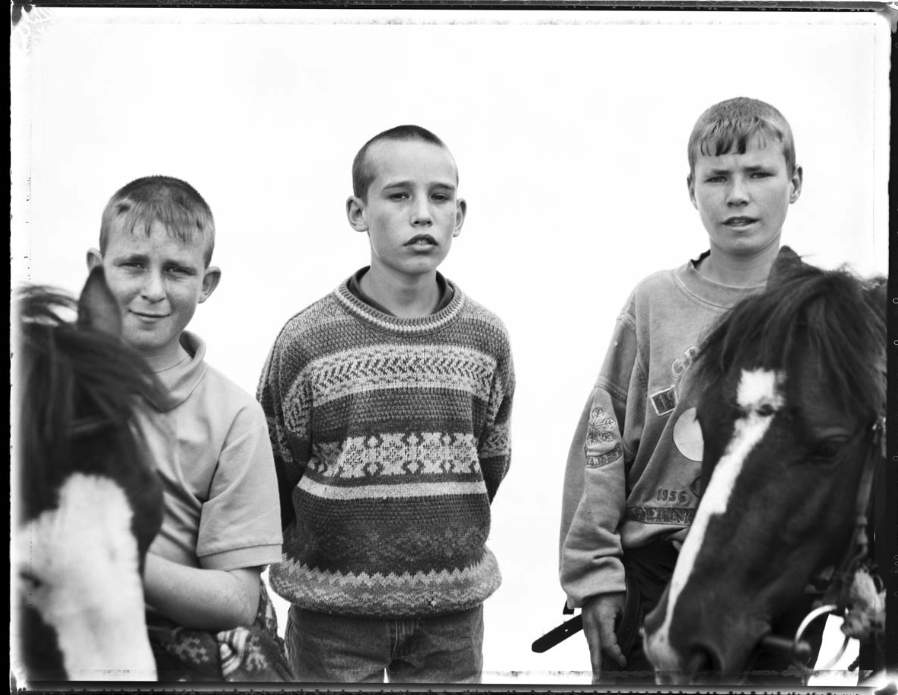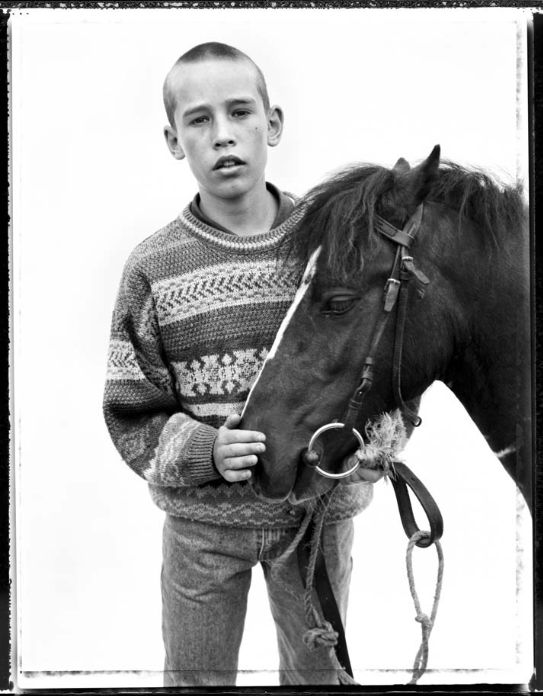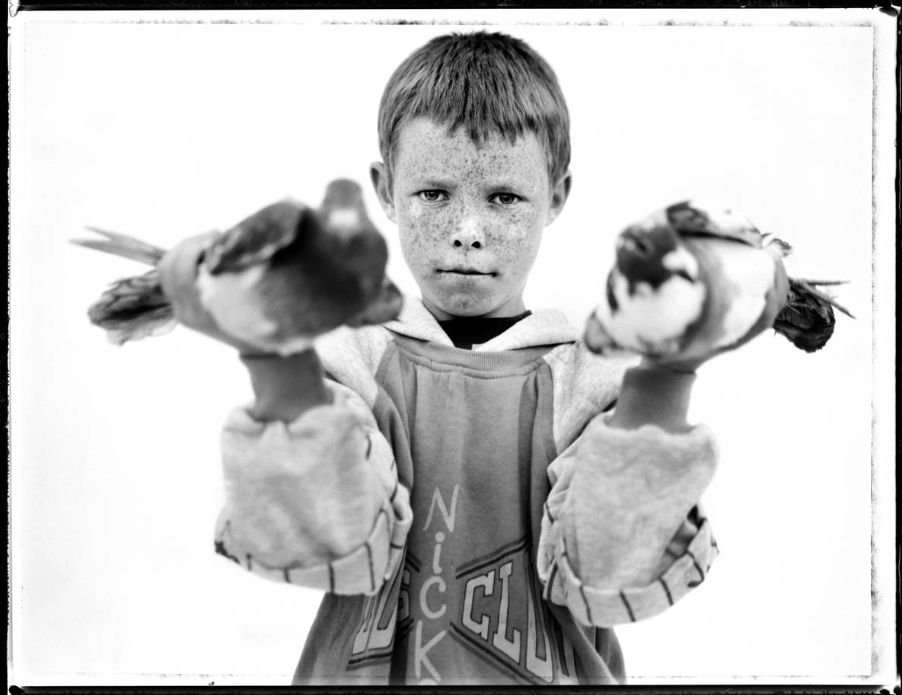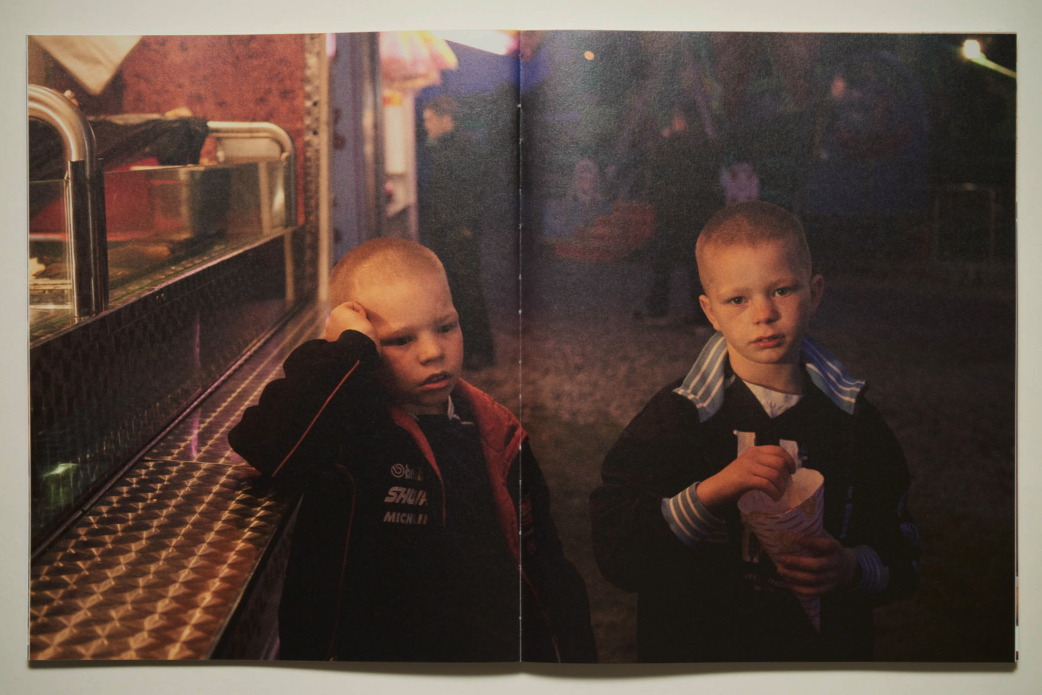“Paddy & Liam” Invites You to Reflect on Your Own Upbringing & Indoctrinations
Interview by Megan Campbell / Talent Manager at Working Not Working
I had the pleasure of talking with fashion and documentary photographer Perry Ogden on the heels of his recent book launch. The British-based WNW Member talked about the early days of his career, his interest in the traveling community of Ireland, and his latest photo book Paddy & Liam. Ogden's eye for this demographic started with Pony Kids way back in 1999, which not only inspired big names in the fashion world but also offered a glimpse into the world of this community. As Ogden explains, “The Irish traveling community is a very raw and straight-up community; there are fewer presentations than in settled society. They haven’t been indoctrinated with things like the rest of us.”
Tell us about your creative background? When did you first get into photography?
My mother was a woman’s paint editor at The London Times when I was 9 or 10 years old. Often after school I’d play football, get thrown out of school, and walk over to her office. It was in the pre-digital days so everything was printed onsite. I remember my mum would take me to the cafe, get me a cheese roll, and get one of the printers to take me off to hang out in the huge printing works. There were these incredible smells that I later recognized when I first stepped into a dark room. My mother died from cancer when I was 11. At 13, I went to private school and took a photography course, which connected me to the time spent with my mother at The London Times. I loved the process of making images and printing.
A little later in my life, my aunt, who was a fashion journalist and editor at the likes of Zuchini, Nova Magazine, and The Sunday Times, got me a job with a photographer on my off-days and during holidays. I was basically making cups of tea and sweeping the studio floor. By the time I left school, I wanted to be a photographer. In my final year, I co-edited and published a magazine inspired by Interview Magazine. It brought me to New York multiple times where I photographed Andy Warhol and others like Daniel Whelan, David Bailey, Joe Strummer, and Diana Rig. Magazines were a huge inspiration for me back then in the ‘70s. I went into assisting after school and did that for a couple of years and then officially started up as a photographer.
So you never had any formal training?
No, it was more like an old-fashioned apprenticeship which was a great way to learn. I never went to college or photo-college, nothing like that.
Did you have any other creative outlets before settling on photography?
I guess I’ve always dabbled in writing and filmmaking and for a while I went off to paint. I gave up photography in the early days in terms of my commercial work and I went off to Paris. I went to different ateliers to learn to draw and paint. Then out of the blue I was asked to do a shoot for W Magazine when Dennis Freedman was newly appointed as creative director and had revamped W. We shot in Ireland and from that I got a Ralph Lauren campaign and one thing led to another. I felt more comfortable coming back to it because I had broadened my horizons and learned a lot from painting and drawing.
I think it’s nice when you can use your creative mind in a different way for a minute.
Yeah, it takes you out of yourself. It was an interesting time. One of the places I used to go to was Atelier Janon and it was a quiet “everyday’s a Sunday” type of place, all the painters there were retired. I was obviously a lot younger and thinking “what am I doing here when I could be out earning some money?” But I stuck with it and it was an amazing and informative experience.
Let’s move onto Pony Kids and of course your love for the Irish traveling community which I find especially interesting having grown up in Dublin. Can you give us a little background into how this came about?
When I first came to Ireland in the mid 80’s, I had an Irish girlfriend who introduced me to circus people and travelers; that’s where it all started. I spent some time with Courtney’s Circus and there I met a multitude of travelers. Pony Kids stemmed from this. Once I had the photographs complete, I went around to get permission from the kids to use the pictures for my book but also to interview them to give the book some kind of narrative. I went around and found everybody which was difficult; I knew where one or two people lived but after that I hadn’t a clue.
Over the course of a year, I’d hit the road to try and find a couple of them. Some were travelers but a lot were settled people and of course they were from all over because the pictures were taken at Smithfield Horse Fair, which only took place the first Sunday of every month. People had come from places like Wexford, Waterford, and Galway to be there. What’s amazing is that nearly every single person had the polaroid I had given them on that day, so when I knocked on the door and asked if they remembered me from Smithfield they’d take me up to their bedroom and show me the polaroid stuck on their wall. I met more travelers on the Pony Kids journeys and after that I decided to make a film.
I received permission to sit in the juvenile court, where I researched stories and met characters and one time a traveler boy and his sister came in and I was fascinated by them. They weren’t let out but I asked the guard the next day what had happened to them; they had been held again but then sent home. Their address was read out in court so I went down and spoke to the boy and explained that I was doing research for a film and asked if he’d be interested. I gave him a copy of Pony Kids, he said yes, and from there we worked together. I listened to their stories, and spent time with the family.
“The Irish traveling community is a very raw and straight-up community; there are fewer presentations than in settled society. They haven’t been indoctrinated with things that the rest of us have.”
You’ve really shone a light on this community over the years which is fantastic. Do you find it to be filled with a multitude of stories and insights?
The sister that was in the court with the boy was a different sister to the one who became the lead in the film. One day, I had gone down to where they live and no one was there other than this girl Winnie. She’d approached me and knew I wanted to hear all about her brothers so she took me into one of the caravans and I filmed her telling stories. The stories got bigger and bigger and I could see her imagination running wild. She reminded me of this wonderful character in Terrence Malick’s Days of Heaven. I immediately thought, “Wow, this girl is a complete natural.” She told me she was 16 and later I found out she was 9 or 10; she thought she had to be 16 to be in the film.
The Irish traveling community is a very raw and straight-up community; there are fewer presentations than in settled society. They haven’t been indoctrinated with things like the rest of us.
Where did the idea for Paddy & Liam come from? Obviously this community has a special place in your heart looking at your previous work, specifically Pony Kids and Pavee Lackeen.
It suddenly came about, around 2011-2012. I did some pictures with them. I sort of knew then I wanted to document them before they got any older. I didn't really think about it too much more and then in 2015 I did another series of pictures with them; we went to Ballinasloe Horse Fair which they were familiar with, so I kept them in their natural habitat. The first story was the fairground and the town they live in. Then fishing, then with the horses, then at home. After the 2015 series I thought it would be great to do another series with them and make it into a book. What I like about it is that the very first series is not styled. They’re wearing their own clothes. The second series was done for a style magazine so they’re wearing Fred Perry. For the third one, which we were specifically doing to complete the project, they were styled again. I think it’s more interesting that it blurs the lines between fiction and social documentary. It makes it more interesting than being pure social documentary. There’s another element to it.
“I guess that in some ways I just wanted to look at them as travel kids now settled, but also to reflect on the Ireland they were born into and growing up in. You’re simultaneously reflecting on your own childhood and what it means.”
You’ve really put Paddy & Liam on the map. On a personal note, how did it feel seeing them grow and evolve over the years?
I guess that in some ways I just wanted to look at them as travel kids now settled, but also to reflect on the Ireland they were born into and growing up in. You’re simultaneously reflecting on your own childhood and what it means. In particular, ages 10 to 17 is such a powerful time. You start listening to music, seeing films... these types of things have a powerful impact on you at that age and stay with you. That’s something I wanted to reflect on.
Did you ever think about bringing a motion aspect to the project, given the constant motion of the subjects? You’re not shy to the directing world.
To be honest I didn't really think about that at the time. Some people have come to me looking to cast the boys in their short films and I put them in touch. Liam and his younger brother ended up in them. Tom, the younger brother, appears a couple of times in the book as well. He actually got down to the final 3 for the main role in Kenneth Branagh's new film; he’s definitely got a lot of talent too.
What do you see as some of the key messages and takeaways from the book?
None really, it’s just something I want to put out there. It’s almost like a meditation in some ways.
What’s next?
Well, IDEA don’t have any of the books left so it’s only what remains in shops. I think what’s exciting is that IDEA have created this new way of publishing, which has thrown it all up in the air a bit. With publishing and distribution in the past, you’d have to first go to a publishing house of which there aren’t that many that do photo books, and then you’d have to persuade them. But with IDEA, they can put these books out quite quickly and they’re great to work with, so I definitely have more things I want to do with them. It creates an opportunity to create something every year, so I have a few ideas for those and a couple of film projects I’m working on. We’ll see what happens from there.



